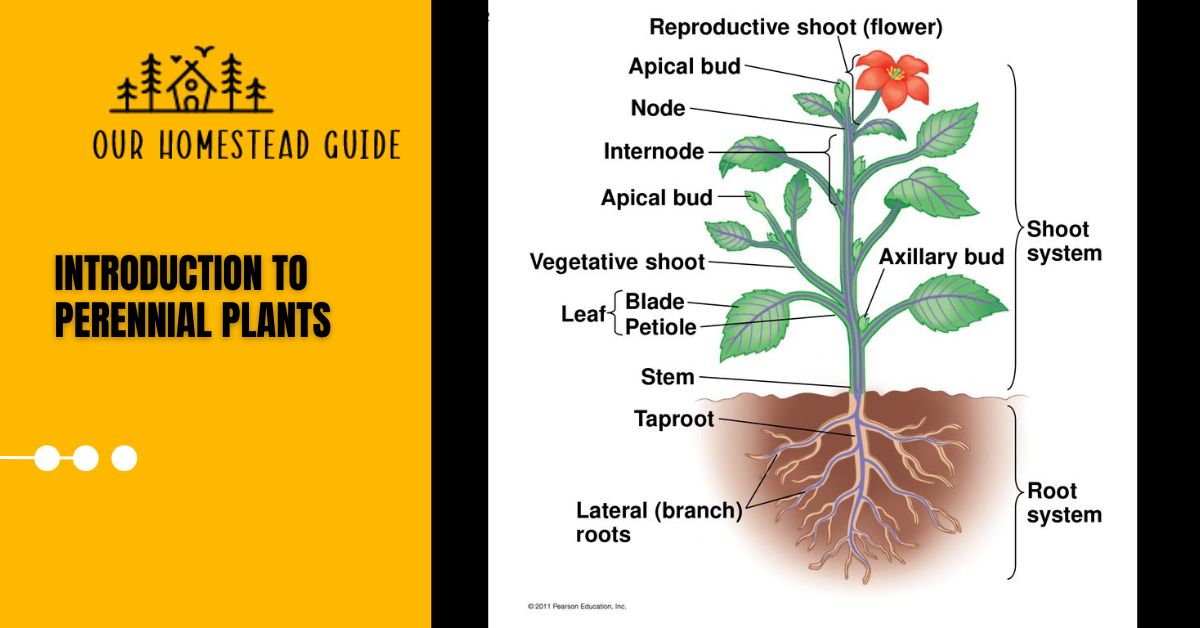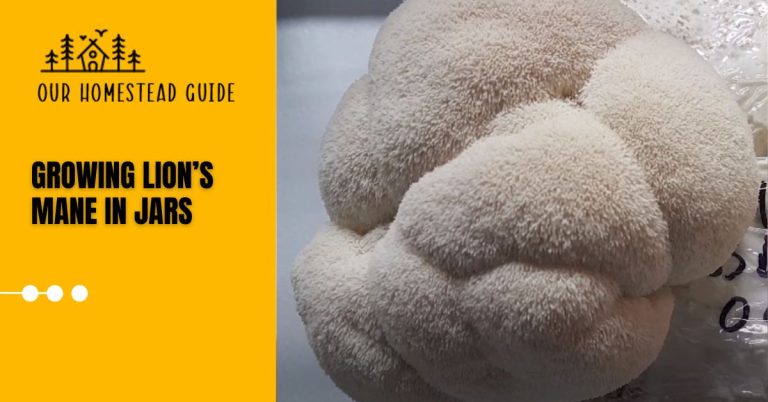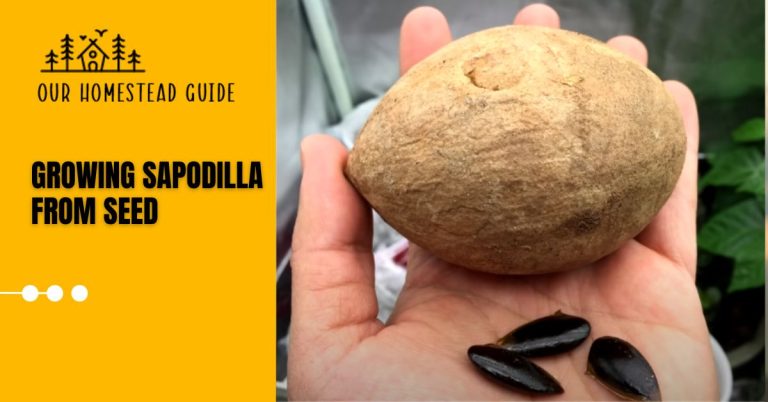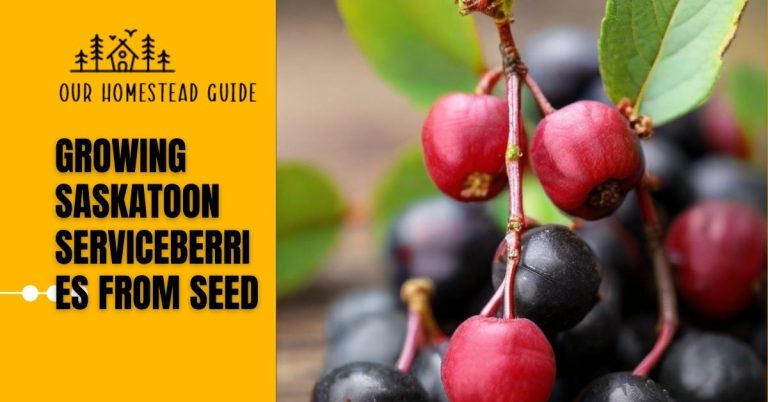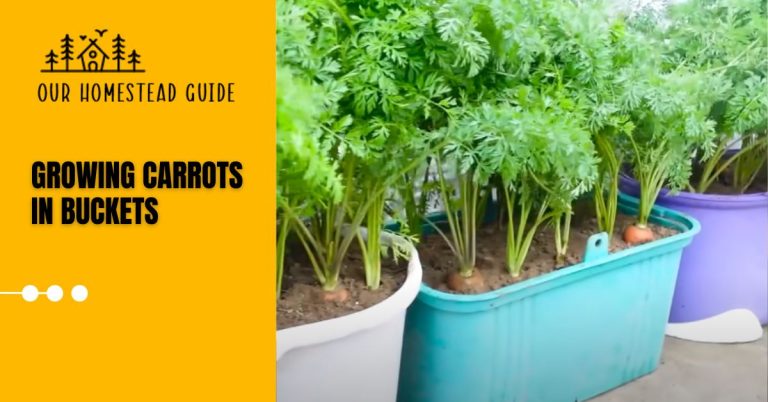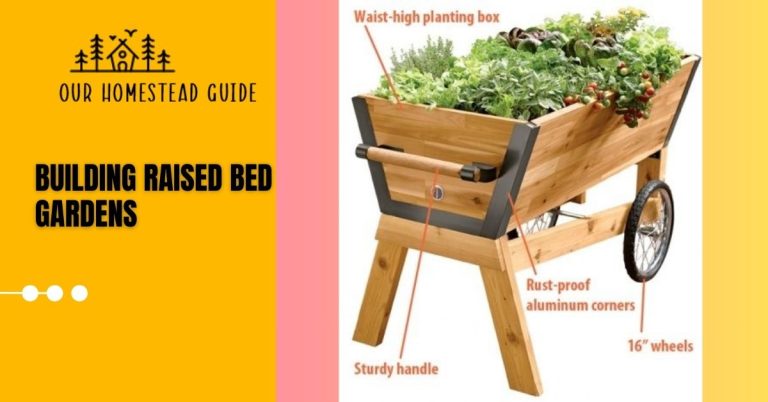Introduction to Perennial Plants: Complete Guide
Introduction to Perennial Plants Do not bother replanting each year! Your garden’s heroes are perennials, which come back year after year. These resilient beauties are available in a wide range of forms and sizes, from elegant ferns to vivid bloomers like daisies. They store their magic underground, where it is concealed in stems, roots, or bulbs to survive the winter.
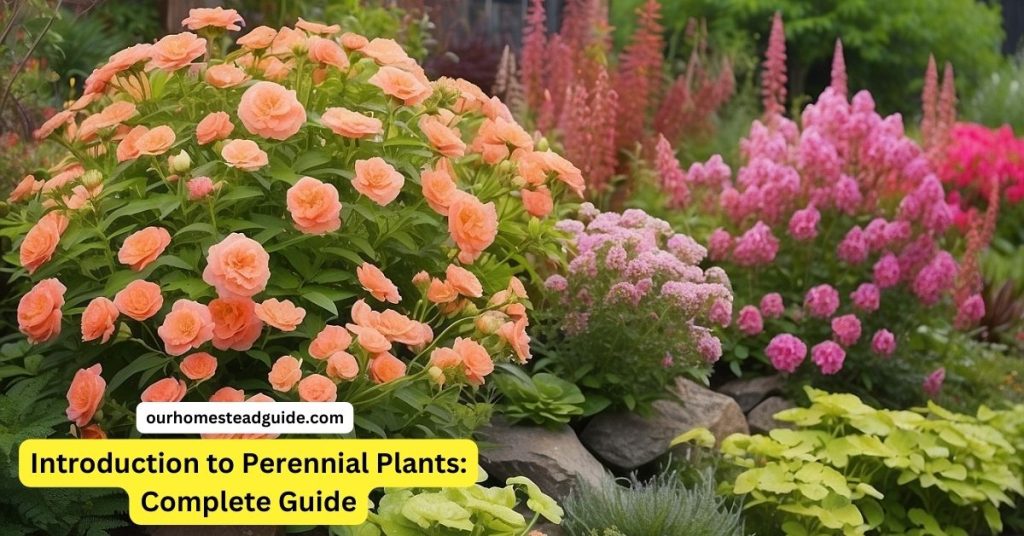
They awaken in the spring when they break out with vibrant blooms and new leaves that will decorate your garden with ever-changing beauty for years to come. Rejuvenate your garden with low-maintenance enchantment by embracing perennials!
Perennial Plants Overview
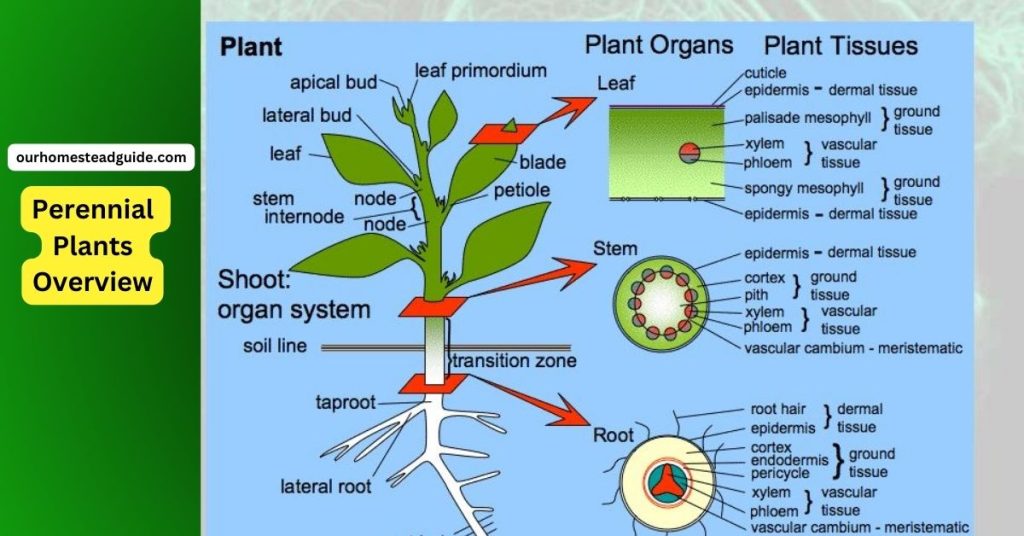
| Feature | Description | Examples |
|---|---|---|
| Lifespan | Live more than 2 years, returning year after year with minimal replanting. | Daisies, hostas, lavender, roses, ferns |
| Growth Habit | Vary greatly, from compact groundcovers to towering shrubs and climbers. | Creeping thyme, daylilies, clematis, hydrangeas |
| Blooming Period | Can bloom for weeks or months, some with continuous blooms throughout the season. | Columbines, coneflowers, peonies, clematis, lavender |
| Flower Type | Diverse range of shapes, sizes, and colors to attract pollinators like bees and butterflies. | Pansies, lilies, irises, poppies, sunflowers |
| Foliage | Beautiful and varied, offering year-round interest with textures, colors, and seasonal changes. | Heuchera, ornamental grasses, ferns, hostas, Japanese maples |
| Maintenance | Generally low-maintenance, requiring minimal pruning, dividing, and feeding. | Daylilies, lavender, sedums, ornamental grasses, ferns |
| Landscape Usage | Ideal for borders, beds, groundcovers, walkways, rock gardens, and attracting pollinators. | Roses, hydrangeas, daylilies, ornamental grasses, clematis |
| Benefits | Improve soil health, attract pollinators, reduce erosion, low maintenance, provide habitat for beneficial insects. | Lavender, daisies, coneflowers, milkweed, butterfly bushes |
Choose Foolproof Perennials:
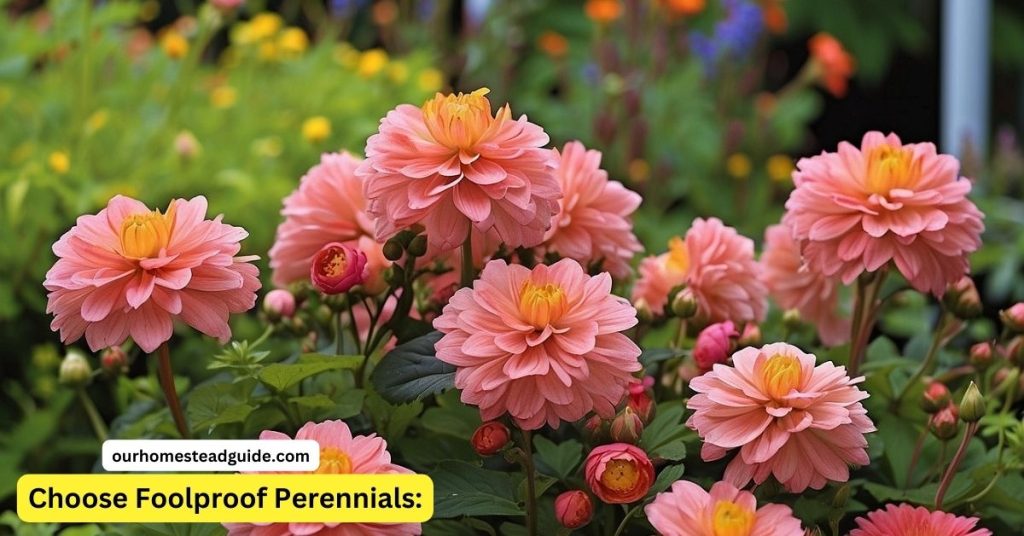
Commence with perennials that are simple to cultivate, such as decorative grasses, daisies, black-eyed Susans, and cone flowers. These resilient plants are ideal for novices.
Planting Perennials:
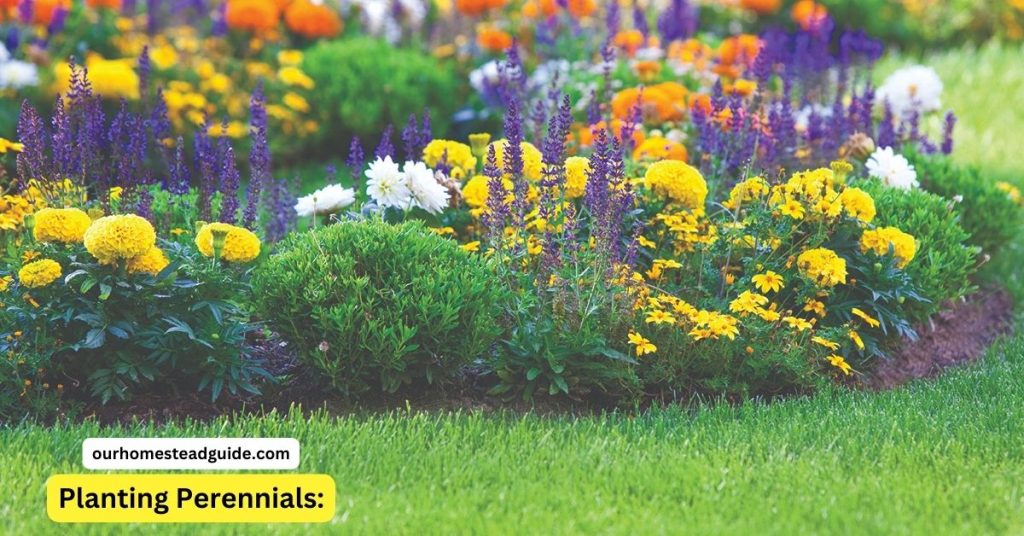
Perennials may be planted and come back every year. Because of this special quality, your gardens can have vertical attraction as they become bigger and better every season.
Establishment and Maturity:
When the perennials reach their third or fourth season, they will be fully grown and established. Now is the perfect time to think about splitting them apart to make more plants.
Dividing Perennials:
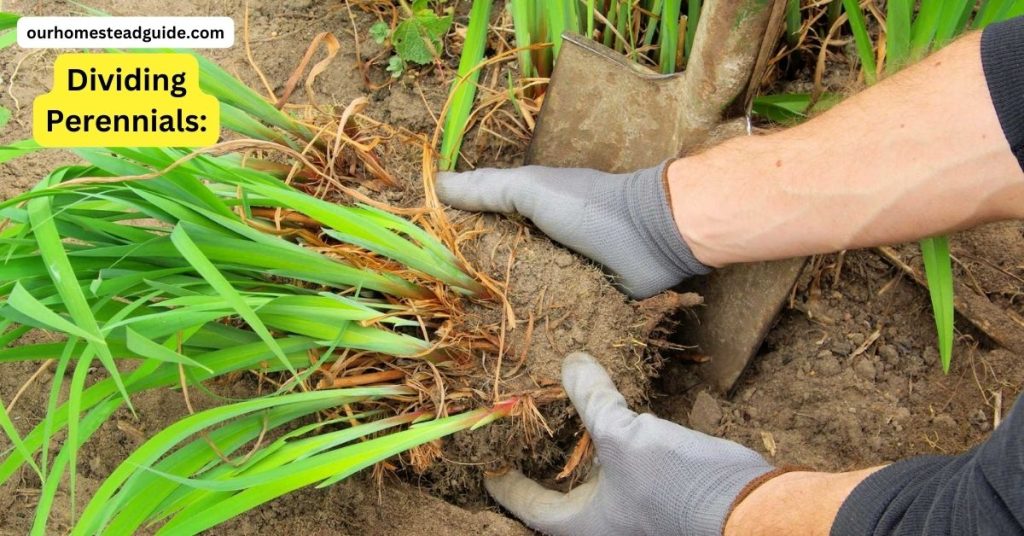
Taking one root ball and dividing it into two or more young plants is the process of dividing perennials. The optimum times to do this operation are in the spring or fall when the plant is dormant.
Tools and Materials:
assemble your equipment, such as a cutting knife and a strong shovel.
Digging the Root Ball:
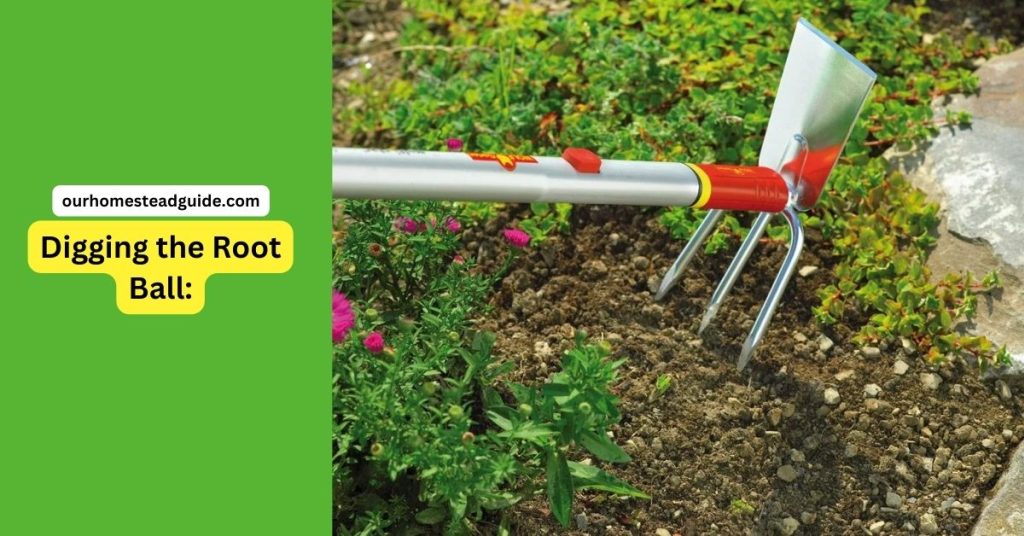
Take great care when extracting the adult perennial’s root ball. In the video, Chelsea uses an aster to illustrate this.
Locate the Middle of the Plant:
Using your knife, locate the center of the plant. You’re not hurting the plant, so don’t worry. You’re encouraging the general health of the plant and root growth.
Divide the Plant:
Divide the root ball into two or more halves, working gently. Where there was only one healthy plant, this small deed produces two.
Planting the Divided Perennials:
It’s imperative to quickly replant the newly separated plants in the ground. To facilitate their rapid establishment, make sure they receive enough water.
Enjoy the Fruits of Your Labor:
Best wishes! Your perennials are now more evenly divided, making your landscape more colorful and bountiful. Happy gardening!
Pros and cons of growing perennial crops
| Feature | Pros | Cons |
|---|---|---|
| Establishment | Reduced work: No need for annual replanting. | Longer establishment: May take several years to reach full productivity. |
| Maintenance | Low maintenance: Minimal pruning, dividing, or feeding needed. | Slower growth: May require more patience for desired results. |
| Soil health | Improved soil structure: Deep roots enhance drainage and aeration. | Nutrient competition: Established perennials can outcompete younger plants. |
| Sustainability | Reduced erosion: Deep roots prevent soil erosion. | Limited crop diversity: Fewer options compared to annuals. |
| Yield | Stable production: Consistent yields year after year. | Lower initial yields: May take longer to reach peak production compared to annuals. |
| Pest and disease resistance | Natural defenses: Established plants better resist pests and diseases. | Accumulating pathogens: Can attract specific pests over time. |
| Biodiversity | Habitat for pollinators: Flowers attract beneficial insects and birds. | Limited weed control: Can be harder to manage unwanted plants. |
| Financial | Reduced costs: Lower seed and labor costs in the long run. | Slower growth: This may require more patience for desired results. |
Types of Perennial Crops for Cold Climates
You wouldn’t imagine that there would be much diversity in what could be grown in chilly areas. You’d be shocked, though! Several magnificent evergreen plants flourish in low temperatures, offering you mouthwatering sustenance and seasonal beauty. Below is a summary of several kinds to think about:
Leafy Greens:
- Sorrel: An early springtime vegetable with a tangy taste, it’s great in soups and salads. Hardy to zone 3.
- Fiddleheads: Appreciate the ostrich fern’s coiled fronds before they unfold. Harvest in the spring and eat it pickled or sautéed.
- Chives: Snipped at any time of year, these onion-like spears are among the first to appear in the spring. tolerant up to zone 3.
- Most cooking herbs: Perennials that tolerate cold temperatures, such as thyme, oregano, sage, and mint, enhance the flavor of your food. Many can withstand zone 4 or 5.
Shoots and Stems:
Asparagus: A springtime delight, it requires several years to grow but yields succulent spears for many years. tolerant up to zone 2.
Rhubarb: Savor the sharp stalks for pies, sauces, and sweets. Best grown in colder areas; hardy to zone 2.
Tubers and Roots:
Jerusalem artichokes: Hardy to zone 3, these knobby tubers have a somewhat nutty flavor.
Potatoes: You may store some of your yield to replant the next year, even though they are not truly perennial. Zones 3 or 4 may withstand many potato types.
Fruits and Nuts:
Fruit trees: Some apple, pear, plum, and cherry cultivars may survive in cold temperatures, depending on your particular zone.
Bush fruits: For cooler climates, currants, blueberries, and raspberries are great choices. Seek cultivars that are zone-appropriate.
Bonus:
Hostas: Hardy to zone 3, these shade-loving beauties give gorgeous leaves even if they are not edible.
Horseradish: Hardy to zone 4, this pungent root gives sauces and relishes a kick.
How can I discover more perennial crops?
Research online:
Websites: Visit sites such as The Land Institute, Perennial Food, and the USDA Plant Hardiness Zone Map. They provide large databases of perennial plants with comprehensive details on their functions, traits, and growth environments.
Read blogs and articles: Become well-versed in perennial gardening and cold-climate gardening. Websites such as “Northern Gardener” and “Gardening at the Heart” provide insightful information and climate-specific advice.
Seed catalogs: Look through the web catalogs of cold-climate perennial suppliers such as Bluestone Perennials, Prairie Moon Nursery, and High Country Gardens. They frequently include thorough explanations and suggestions for every plant.
Seek local expertise:
Clubs and organizations dedicated to gardening: Make contact with neighborhood gardening groups and associations. They typically hold seminars, plant sales, and workshops with a focus on perennials native to cold climates.
Garden centers and nurseries: Check out neighborhood nurseries that provide native or perennial species. Based on your unique soil conditions and climate, the team can provide insightful advice and recommendations.
Master Gardeners: Consult the Master Gardener program in your community for advice. These volunteers have horticultural training and may offer professional guidance on choosing and cultivating perennials in your region.
Embrace experimentation:
Try “forgotten vegetables”: Investigate heritage or uncommon cultivars of well-known veggies, such as beets, kale, and turnips. Numerous provide distinct tastes and enhanced resistance to cold.
Start modest: Avoid taking on too much! Every year, start with a few new perennial plants and track how well they do in your garden. You will eventually discover what grows and what doesn’t.
Take part in a seed swap: By exchanging seeds with other gardeners, you might find intriguing new cultivators that you might not have come across otherwise.
Characteristics of Perennial Plants
- Lifespan: More than two years of life.
- Woody/Herbaceous: These can be either non-woody stems or woody (trees, shrubs).
- Seasonal Growth: Show signs of hibernation, blooming, and vigorous growth.
- Root Systems: Establish broad, deep roots.
- Adaptability: Capable of adjusting to local climates and surroundings.
- Reproductive Techniques: Proliferate via bulbs, rhizomes, seeds, etc.
- Constant Growth: Expand and mature throughout the course of several growing seasons.
- Impact on the environment: offer habitat, stop soil erosion, and contribute to soil stability.
- Low upkeep: Compared to annuals, they often require less upkeep.
- Diversity: Provide a great variety of shapes, sizes, and development patterns.
Ecological benefits of perennial crops
Perennial crops have far more ecological advantages than annual ones. The following are some of the main benefits:
Soil Health:
- Decreased erosion: Soil is held in place by deep root systems, which inhibits erosion caused by water and wind.
- Better soil structure: Roots improve soil drainage and aeration by making pathways for water and air to travel through.
- Increased organic matter: As a result of the breakdown of perennial biomass, the soil is more fertile and retains moisture better.
- Decreased nutrient leaching: Runoff and groundwater contamination are reduced when deep roots can more effectively absorb and recycle nutrients.
Biodiversity:
- Pollinator habitat: Blooming perennials give food and cover to bees, butterflies, and other pollinators, which are essential to the health of ecosystems.
- Decreased dependence on pesticides: Increased biodiversity improves natural pest management and may lessen the need for chemical treatments.
- Support for soil organisms: Various root systems foster a thriving microbial population, which is crucial for plant health and the cycling of nutrients.
- Creation of habitats: Compared to annual fields grown in monoculture, perennial plant communities provide more diverse habitats for a greater variety of species.
Climate Change Mitigation and Adaptation:
Carbon sequestration: Annuals do not store as much carbon dioxide underground as perennials do, which helps to mitigate climate change.
Deep root systems allow perennials to reach deeper water sources, which increases their resistance to dry spells.
Decreased greenhouse gas emissions: Perennial plants can produce less methane and nitrous oxide emissions by requiring less tillage and fertilizer.
Better water cycle: By encouraging infiltration and lowering surface runoff, perennial cover crops can lessen floods and increase water availability.
Additional Benefits:
Decreased energy and resource usage: Fuel and water consumption are reduced when planting and tillage are done less often.
Increased food security: Long-term food production from perennial crops is more resilient to environmental changes.
Possibility of sustainable agriculture: Towards more ecologically friendly and sustainable farming methods, perennial agriculture has a bright future.
Most Frequently Asked Questions!
Q1: What are perennial plants?
Plants classified as perennials survive for more than two years and come back each year. Perennials, in contrast to annuals, never stop growing and blooming, giving your garden everlasting beauty.
Q2: What are some popular foolproof perennial plants for beginners?
Coneflowers, black-eyed Susans, daisies, and decorative grasses are good options for novice gardeners. It’s simple to cultivate and care for these perennials.
Q3: When is the best time to plant perennials?
Planting perennials is best done in the spring or fall. This guarantees a robust start to the growth season and enables them to build their roots throughout periods of hibernation.
Q4: How long does it take for perennials to mature?
Usually, after the second or third season, perennials reach maturity. They establish themselves at this period, and you may think about splitting them to produce more plants.
Q5: What is the process of dividing perennials?
Splitting the root ball into two or more portions is the process of dividing perennials. This is carried out in the spring or fall, when the plant is dormant. The objective is to multiply the attractiveness of your garden, improve plant health, and encourage root growth.
Q6: Can I divide perennials at any time of the year?
Perennials are best divided in the spring or fall, when they are dormant. As a result, the plants experience less stress and may recuperate more quickly.
Q7: What tools do I need for dividing perennials?
Two essential equipment are a cutting tool for separating the plant and a robust shovel for excavating the root ball. For maximum results, make sure your instruments are sharp and clean.
Q8: Will dividing perennials harm the plants?
No, splitting apart perennials is good for the plants themselves. It makes it possible to develop several plants from a single root ball and encourages root growth and plant health.
Q9: How should I care for divided perennials after planting?
Plant the new portions as soon as you divide them, and make sure to give them plenty of water. This facilitates their rapid establishment and enables them to prosper in their new environments.
Q10: Can I divide any type of perennial plant?
Perennials may be separated in many cases, although not all of them will take well to this procedure. For the majority of popular perennials, it’s typically safe, but it’s important to learn about the particular requirements of each plant species.
you may also like this article.

